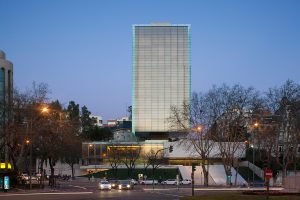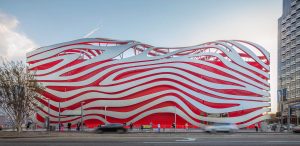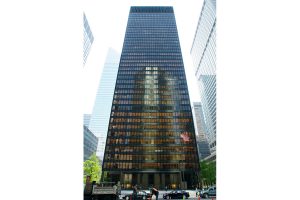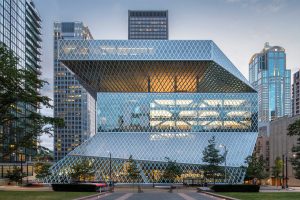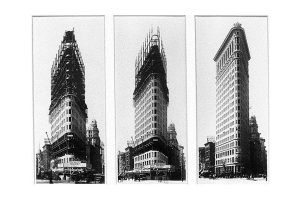The Inland Steel Building, an historical landmark on Chicago’s skyline in brushed stainless steel and glass
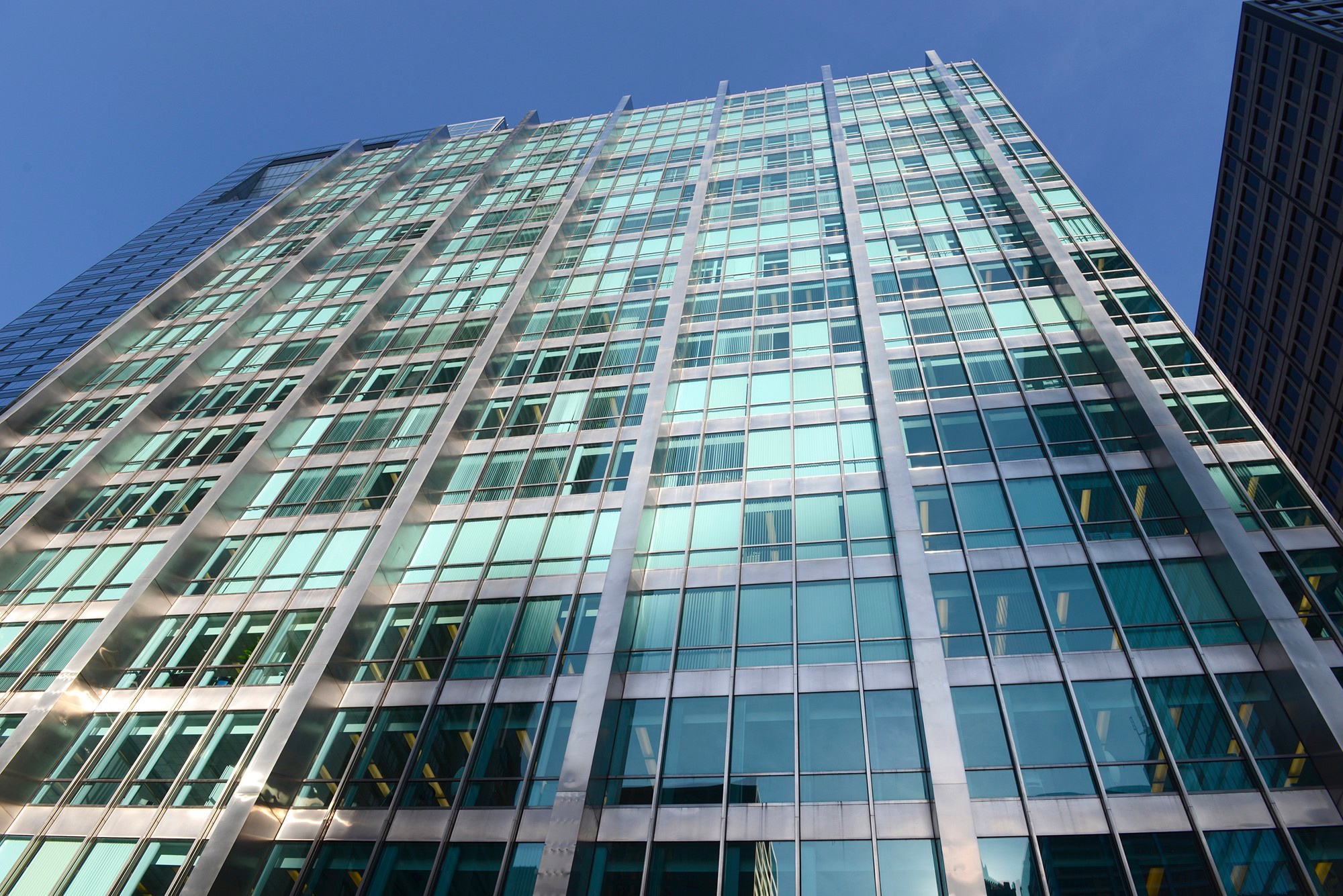
Built in 1958 the Inland Steel building ushered in a new era of modernity for Chicago with its shimmering façace that combines aquamarine glazing and brushed steel.
Founded in Chicago in 1893 by financier Phillip Block, the Inland Steel Company had grown from strength to strength to become the eighth-largest steel producer in the United States by the 1950s. To celebrate this success, Inland Steel commissioned a new corporate headquarters in Chicago’s Loop in 1954. This was the first high rise to be built in Chicago since the Great Depression during the 1930s so Inland Steel wanted a building with a modern design that would symbolize the resilience of the steel industry and showcase their product as well as other postwar technologies. “We wanted a building we’d be proud of, one that spelled steel,” said Leigh Block, a former Vice President of the Inland Steel Company and descendent of one of the company’s founders.
The Inland Steel building is located in the Loop, Chicago’s downtown district which features today other high-rises that were built later but also public parks, shops and restaurants, hotels, theaters and museums. It has become the second largest commercial business district in North America and home to Chicago’s City Hall, the seat of Cook County, and numerous offices of other levels of government and foreign consulates.
Ushering in Modernist architecture
The original concept design was by Walter Netsch but it was later taken over by Bruce Graham who completed the project and received most of the credit for the building design. This was to cause a life-long feud between Netsch and Graham.
(Bruce Graham was a world-class modernist/brutalist architect. He went on to design many other high-rise buildings including the 108-storey Sears Tower another of Chicago’s landmarks which at the time, was the tallest building in the world. It held that ranking from its completion in 1973 to 1998. The Sears Tower was renamed the Willis Tower in 2009).
This elegant 19-storey office tower displays sleek facades combining shimmering aquamarine glass and brushed stainless steel. Its sleek sophisticated design ushered in a new era of modernity in the city. The primarily glass facade is completely devoid of ornamentation. This must have been a surprising change for Chicagoans accustomed to the richly ornamented terra cotta, brick and stone facades of the past. The building’s design illustrates all the principles of Modernist concepts such as perfect proportions, attention for detail, quality materials.
An open plan aesthetic
Inland Steel’s column-free interior demonstrates the Miesian design concept of universal space. The structure of the building is based on 3 Miesian boxes. The term Miesian is from the incredibly influential German-American architect Ludwig Mies van der Rohe.
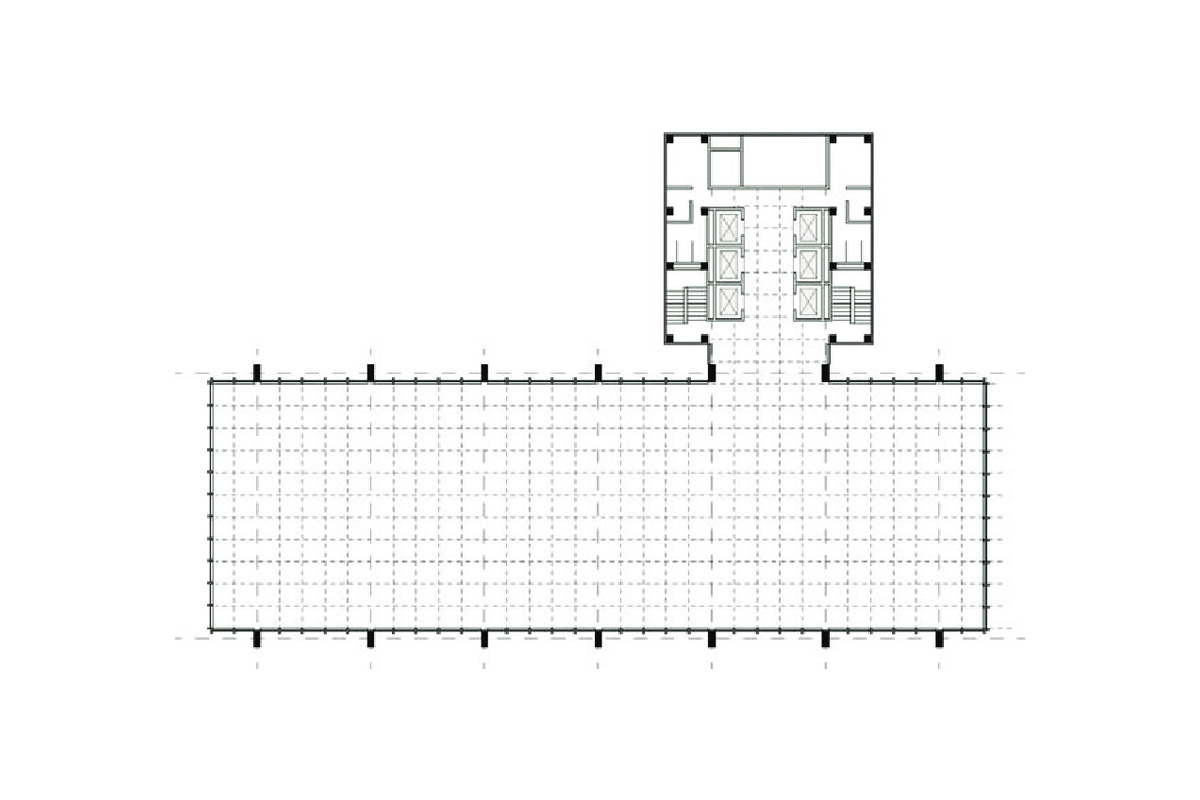
Floor plan of The Inland Steel Tower showing the location of the service tower behind the office tower and the supporting 14 exterior columns that free up the floor space completely on each level
The building form consists of two towers: a 19 storey office tower to which is attached to a 25 storey service tower that stands behind it and contains all the building’s essential systems including its lavatories, seven elevators, staircases and vertical circulation. Because the central core of the building is all contained in the attached service tower this frees up all the floor space in the adjoining office tower. As a result each level had 10,200 square feet of unobstructed, expansive space. There are no internal columns on the floors because all the structural elements have been pushed outside of the building’s curtain wall. The clear-span construction is also made possible by seven pairs of nickel-chrome stainless steel clad columns (carrying the weight of the structure). The exterior columns of the building were clad with brushed stainless steel cladding.The irony was that Inland Steel were only producing carbon steel at the time of construction so the stainless steel for the building had to be purchased from another steel company.
The building’s open plan design was truly innovative at the time of its completion. It provided unmatched, flexible square footage to tenants. This was made possible by running 60ft supportive girders beneath each floor between the pairs of columns spanning the length of the tower’s exterior. The heating/cooling distribution system and telephone lines were also run beneath the floors to further clear the interior of obstructions. The floor is made up of a grid of modules that can be lifted to access these systems. The wide-open floor plan of the Inland Steel office tower is partly responsible for the building’s enduring popularity. Even today, it allows fast developing companies to adapt the space to their constantly changing needs brilliantly illustrating the Modernist concept that ‘form follows function’
Lightness, serenity and polished grace
Construction started in 1957 and was completed within a year thanks to the straightforward construction techniques utilized. The office tower seems to float above its glass-enclosed, transparent lobby—staying true to a Mid-Century Modern aesthetic. The sculpture in the lobby,Richard Lippold’s Radiant One, 1957, seen below, is a golden rod-and-wire construction, shaped like an atomic era asterisk, a clear indicator of mid-century style. It dominates the space and feels weightless against a black marble wall that reflects the sculpture and the city outside. His art belongs to a sculptural tradition that began in the early 20th century with Cubism and Constructivism, which shifted focus from the shaping of solid materials to the orchestration of spatial relations among abstract elements. Many of his works were suspended but here Lippold has used the reflective qualities of a shallow marble pool.
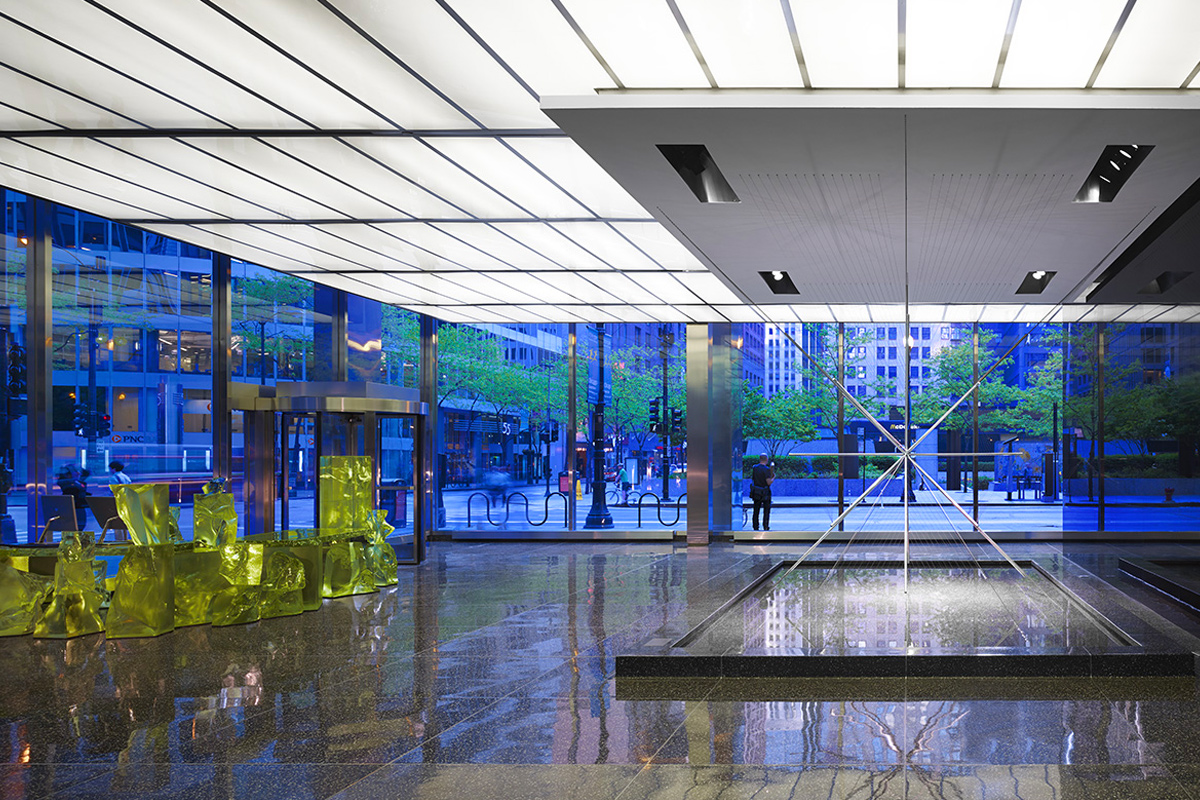
Richard Lippold was an industrial designer before becoming a sculptor. His geometric constructions play on the reflective qualities of goldenrod and wire as a medium
In 1969 the Inland Steel company had 25,000 employees. The company was heavily focused on the automotive sector, producing steel for most American car manufacturers. The company did suffer in the 1970s from imported steel, but due to outstanding management, they stayed profitable. They became so profitable in the late 1990s that they became a takeover target. Ironically just when the Inland Steel Building was designated a Chicago Landmark in 1998 the Inland Steel Company was bought out by ArcelorMittal.
A building that refuses to grow old
In 2018 the building underwent an extensive ground-up renovation conducted by SOM to make it more energy efficient and sustainable for the 21st century. This included for instance, refitting the existing glazing with low-e high performance glazing, installing a high insulation green roof to manage stormwater runoff, integrated daylight facade and chilled beams, which use less energy for cooling than conventional HVAC systems. However as Cate McCormack vice president and general manager of Inland Steel underlines: “maintaining the attributes of the property that make it so historically and architecturally significant, as well as not disrupting tenants’ spaces, were our biggest obstacles when integrating energy-efficient technologies.”
McCormack added that, “We successfully delivered building systems that will curb energy costs and reduce the property’s impact on the environment and our community, while maintaining its classic features.” The design also calls for new art in outdoor plazas and a revolving art program in the tower’s lobby.
To conclude, architect critic M.W. Newman wrote in 1982 when the tower won an AIA 25 year honor award “In a steel-building city, [the Inland Steel Building] . . . retains a lightness, serenity, and polished grace that continue to make it an influential emblem of modernism.”
History of the Inland Steel Company
It was Phillip Block, a Chicago based financier who set up Inland Steel Company in 1893.
He rapidly expanded the company which grew from 250 staff members in 1897 to 2600 workers in 1910.
As the business began to thrive so did East Chicago where it was located. The area experienced explosive demographic growth. Between 1900-1910 the US census shows that the population soared from 3411 to 24 000. In just a decade the city had become the largest industrial powerhouse in the whole of the USA with over 80 per cent of land zoning dedicated to heavy industry. It acted as a suction pump attracting immigrants from all over Europe and the United States. Labor shortage during the First World War brought waves of Mexicans followed by the Great Migration of Black Americans from the rural Southern States but also Polish families. According to a city demographic survey in 1959, there were 1,000 Mexican families, 10,000 African American families, along with 3,000 Polish families
Inland Steel would be a massively important part of East Chicago’s economy until the late 1990s.The company carried out all its manufacturing at one major steel plant in East Chicago, Indiana. The Indiana Harbor Ship Canal was built in 19107 to connect the Grand Calumet River to Lake Michigan. This waterway allowed the company to take shipments of iron ore into its production facility and send finished goods easily out of the plant afterwards.
The growth of the company’s steel output was quite remarkable. In 1903 Inland Steel produced approximately 60,000 tons of steel. In 1914 the company’s production had expanded to over 600,000 tons. In 1917 the company broke the magic 1 million tons for the first time. At its peak of production in 1978, the company produced 8.6 million tons.
By 1969 the company had 25 000 employees. The company was heavily focused on the automotive sector, producing steel for most American car manufacturers. The company did suffer in the 1970s from imported steel, but due to outstanding management, they remained profitable. They went on to be so lucrative that in 1998 The Inland Steel Company was bought out by ArcelorMittal.

